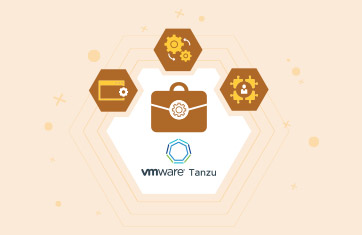 The virtualization market has seen a dramatic growth in the last few years. Many recent industry surveys have pointed that a majority of enterprises are over 30% virtualized. Monitoring and management has become crucial as virtualization further penetrates the enterprise. In this article, we consider five of the most common misconceptions about virtualization monitoring and management.
The virtualization market has seen a dramatic growth in the last few years. Many recent industry surveys have pointed that a majority of enterprises are over 30% virtualized. Monitoring and management has become crucial as virtualization further penetrates the enterprise. In this article, we consider five of the most common misconceptions about virtualization monitoring and management.
- Myth 1: Virtualization makes monitoring easier because there are fewer physical servers involved.
An earlier article discussed why this is not really the case. - Myth 2: Virtualization offers ways to reserve resources. Therefore, you can just reserve resources for your VMs and they will not interfere with each other.
Two reasons why I say this is a myth. First, not all resources can be completely reserved (yet) with most virtualization platforms. This is especially true for network and storage resources. Secondly, if you just go about statically reserving resources, you are not really benefiting from resource sharing. So most environments do not use static resource reservations. - Myth 3: Virtualization technology allows VMs to be provisioned rapidly on-demand. The virtualization team’s job is to provide VMs and they can operate independent of the enterprise IT operations teams.
This is a myth because as critical applications are deployed on virtual machines, it will be important to determine when a problem happens, where is the root-cause: is it the network? database? web server? middleware? or it is the virtual machine or is it the physical machine? or storage? If the virtualization team works in isolation, as a silo, it will not be possible to get end-to-end, top-to-bottom visibility into all the components involved in supporting a critical business service. This in turn will result in ineffective and inefficient operations management. Click here to view a presentation that explains why you should not be monitoring virtualization as another infrastructure silo. - Myth 4: Virtualization platforms offer a lot of metrics. These metrics reveal all I need to know to monitor my VM infrastructure.
Yes, you get a lot of metrics from the virtualization platform – from these metrics, for example, you can find out which VM is taking up a lot of CPU. However, you cannot find out from these metrics why the VM is taking up CPU – is it a specific runaway process? is it load? etc. Hence, you need monitoring tools that go beyond just showing the virtualization platform metrics in another graphical interface. - Myth 5: Virtual desktops are just VMs. So the same tools used for monitoring virtual servers can be used for monitoring virtual desktops.
This is a topic I have covered earlier. In a VDI environment, it is critical to monitor users, not just VMs. This is because the workload of a VM depends on which user is logged in to the desktop and what applications he/she is using.
![]() If you are interested, click here to view an on-line presentation goes into more details on these five common myths of virtualization management.
If you are interested, click here to view an on-line presentation goes into more details on these five common myths of virtualization management.
eG Enterprise is an Observability solution for Modern IT. Monitor digital workspaces,
web applications, SaaS services, cloud and containers from a single pane of glass.




